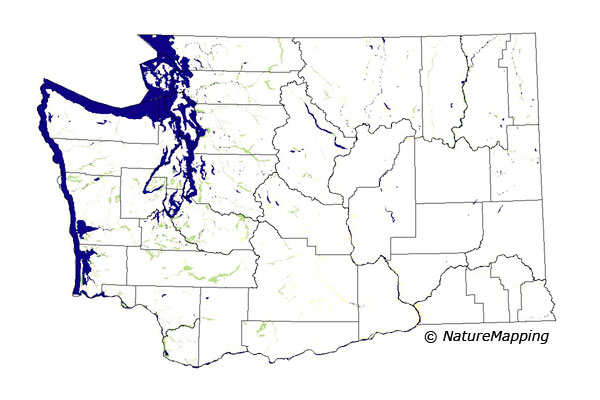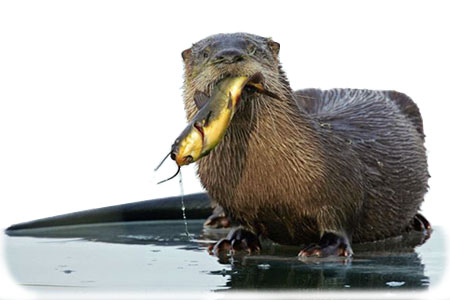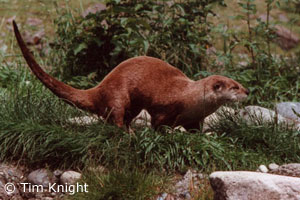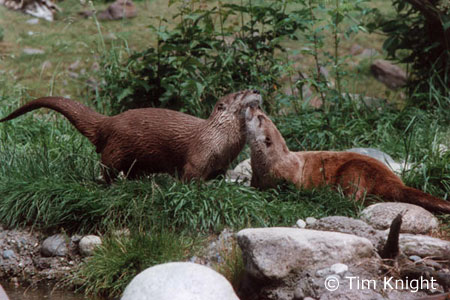
NatureMapping Animal Facts
River Otter

River Otter (Lutra canadensis) Description The River Otter is built for swimming - they have a streamlined body, short legs with webbed feet, dense fur that keeps otters warm, a tapered tail, small ears, and nostrils that can close underwater. They can grow to be more than a meter long, from head to tail, and weight up to 14 kg. Males are larger in size than females (see photos).  Photo courtesy of Natures Pics.
Photo courtesy of Natures Pics.
River Otters are mammals that are relatives of the stoats, weasels, mink, badgers and wolverines. These groups of mammals are known as Mustelids. The Mustelids all have one thing in common, they all have scent glands that they use to mark off their territory. In the wild they live less than 10 years; in captivity they live 10 - 15 years.
Range/Habitat:
Click the range map to learn more about the distribution of River Otters in Washington.  Photo courtesy of USFWS.
Photo courtesy of USFWS.
Diet: River Otters are carnivorous. They eat a variety of animals, including fish, crustaceans, amphibians, snakes, water insects, snails, worms, small mammals, birds, eggs, frogs, turtles, and any aquatic invertebrates. Behavior: Rivers otters are generally solitary, except for females with their young, and do not associate except during the mating season. Males often breed with several females in late winter or early spring. Females give birth to 1 to 6 young per litter, with an average of 2 to 3. Otters are born with fur, but are otherwise helpless. Females give birth, nurse, and care for their young in a den near the water. The young are weaned at about 3 months old and begin to leave their mother at 6 months old. Adult females care for their juvenile offspring, who disperse by the time the otters give birth again. Sexual maturity is reached at 2 to 3 years of age.
Did you know?
River Otters More information: Northern River Otter - Animal Diversity Web
|

